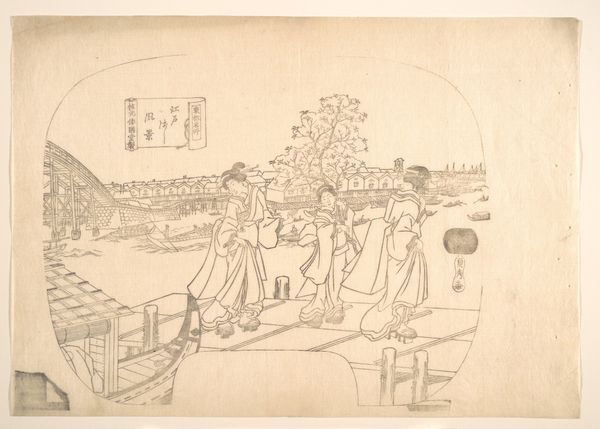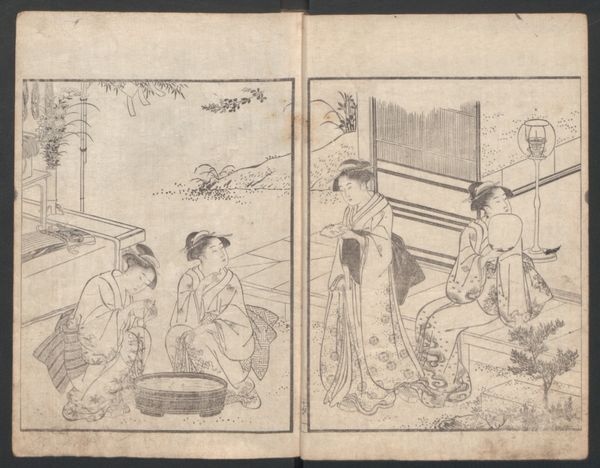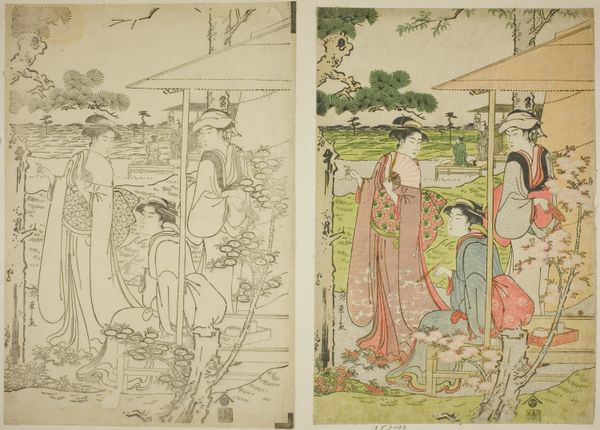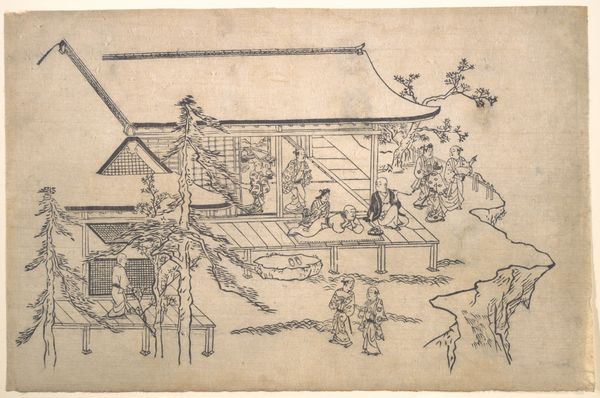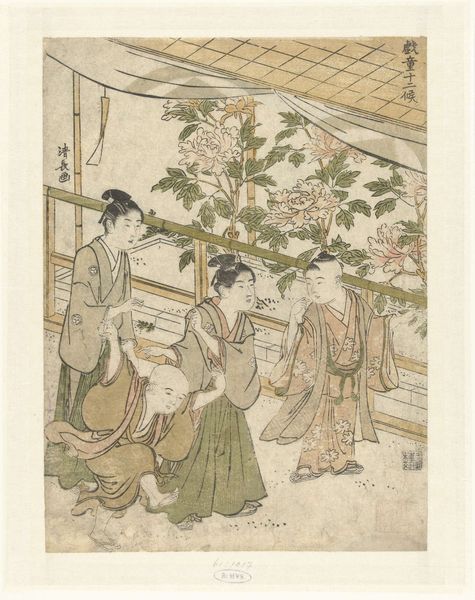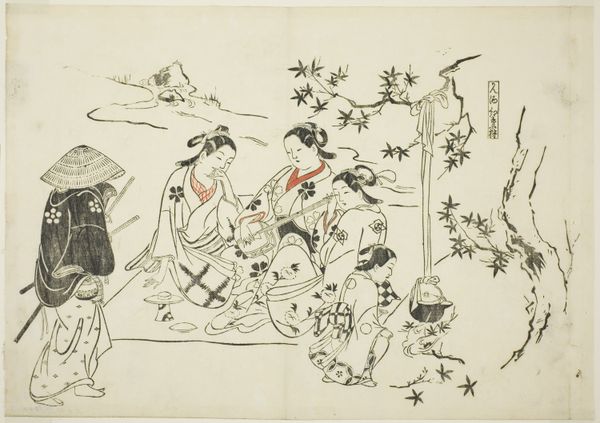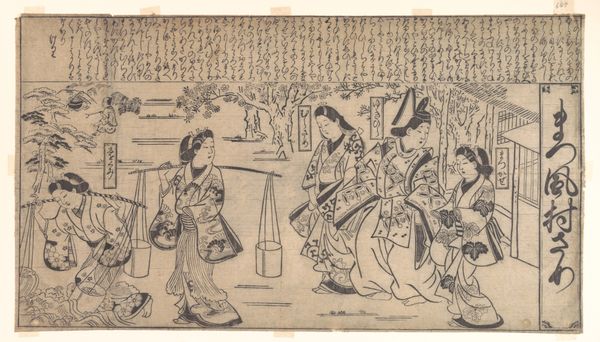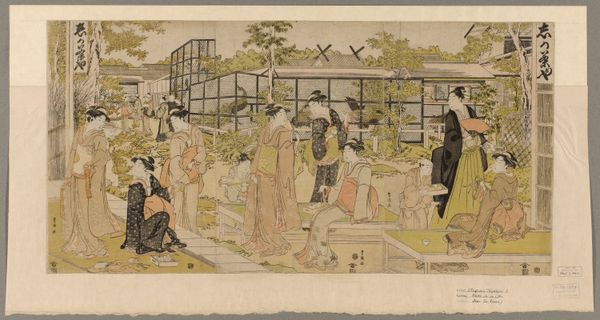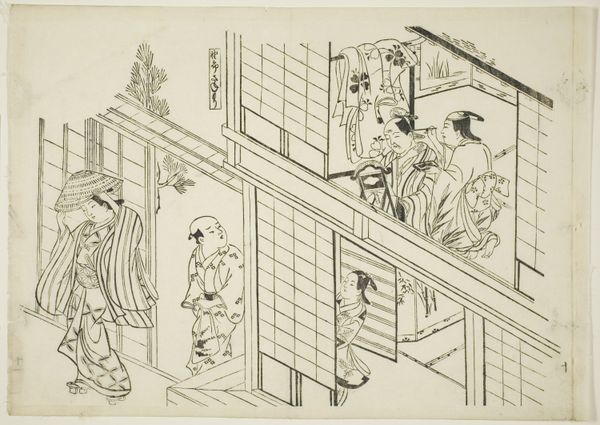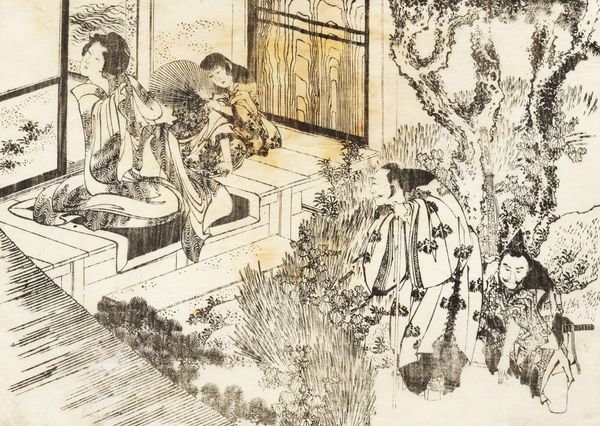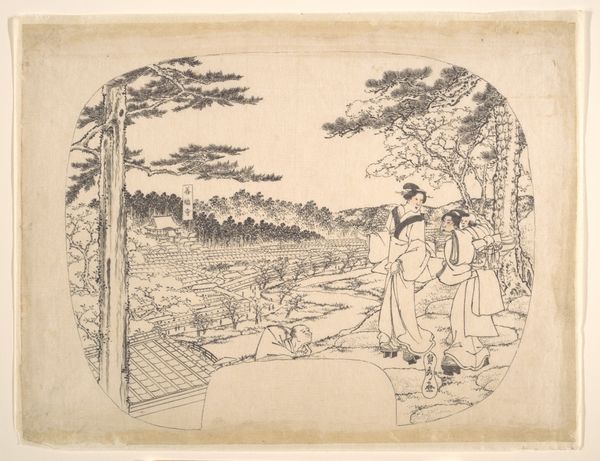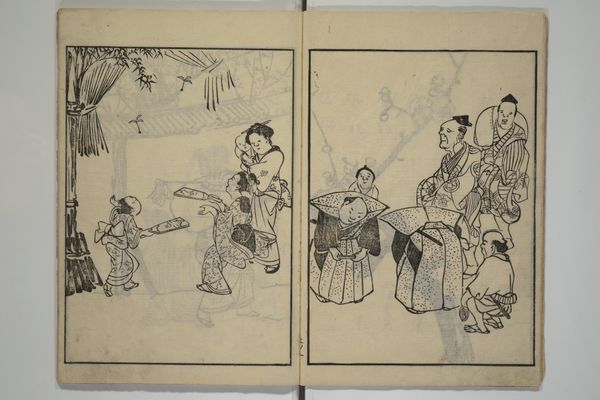
Scene from the Chushihgura (Vendetta of the 47 Loyal Retailers) 1810 - 1830
0:00
0:00
print, woodblock-print
#
ink drawing
#
narrative-art
#
ink painting
#
pen drawing
# print
#
asian-art
#
ukiyo-e
#
figuration
#
woodblock-print
#
line
Dimensions: H. 15 in. (38.1 cm); W. 30 in. (76.2 cm)
Copyright: Public Domain
Editor: We’re looking at "Scene from the Chushihgura (Vendetta of the 47 Loyal Retainers)," a woodblock print by Torii Kiyomine, likely made between 1810 and 1830. It's currently at the Met. The whole scene feels very dreamlike. It's hard to believe that it represents such a dramatic subject with these very soft lines and the women are surrounded by lovely gardens, but how are we meant to look at it? Curator: Consider the implications of its mass production. The *ukiyo-e* prints like these, meant for a burgeoning merchant class, brought narratives of samurai loyalty, of *bushido*, to a broader audience. What impact did this have? Did it democratize a warrior ethos, or did it serve to pacify a potentially restive population by romanticizing the past? Editor: So the medium itself shaped the message? Because it's a print made for a large market. Curator: Exactly! It wasn't commissioned by the elite for the elite. And think about the labour involved in producing a woodblock print - the artist, the carver, the printer, all contributing to this image of idealized loyalty. The lines are very soft but are precise because the woodblocks are a subtractive process - this also points to high skill in crafting an elaborate print. How might this production process inform our understanding of the depicted story? Editor: That’s fascinating. I was focused on the figures and composition. Now I’m considering the whole social context surrounding how the artwork was manufactured and spread. So, by examining the materials and its creation, it's not about individual genius but a product of collective effort which helps understand the cultural effect. Curator: Precisely! It allows us to appreciate how the narrative was circulated and consumed in 19th-century Japan. Editor: I see it now! It's less about the artistic interpretation of one person, and more about what material culture tells us about the era it was created in.
Comments
No comments
Be the first to comment and join the conversation on the ultimate creative platform.
